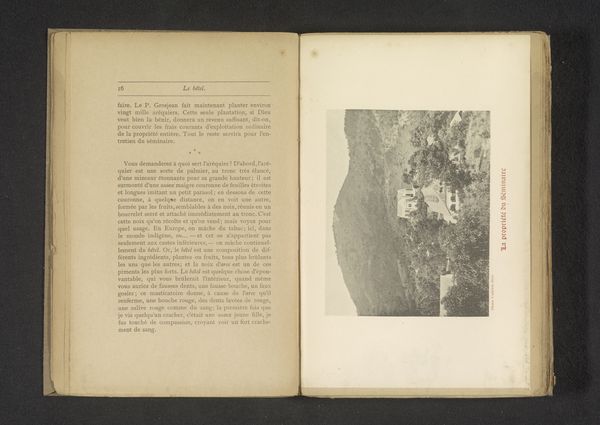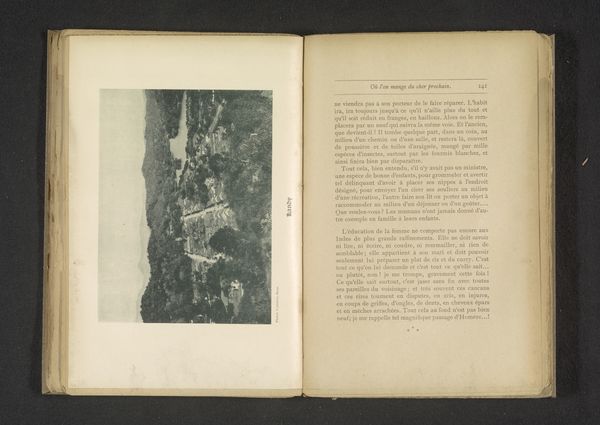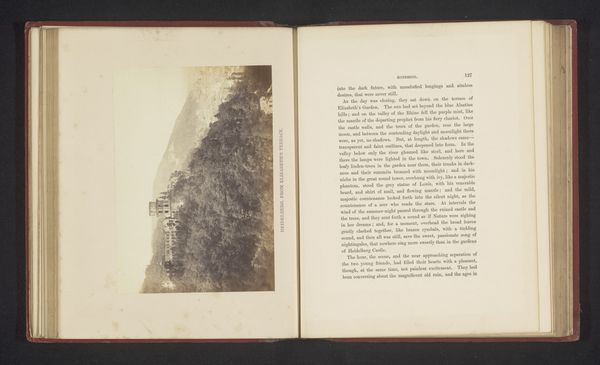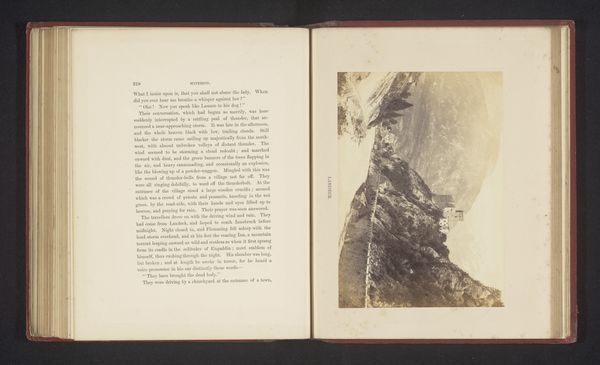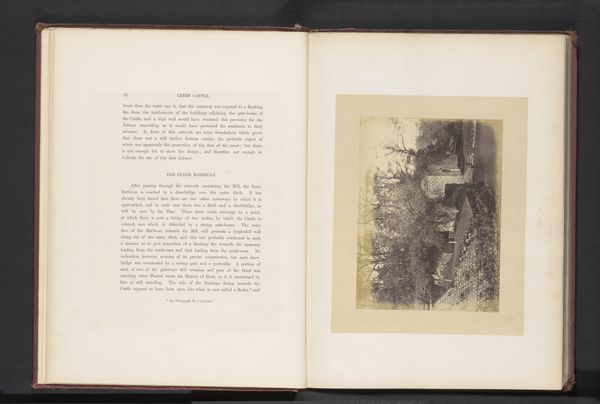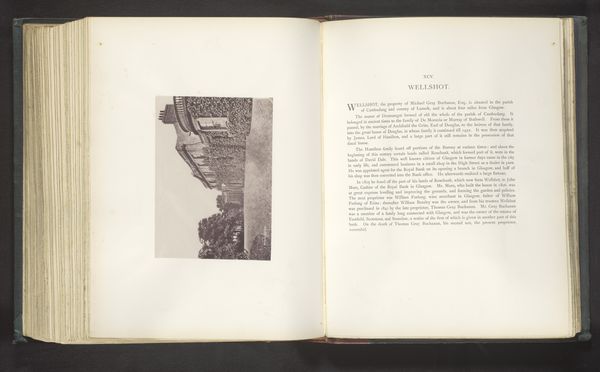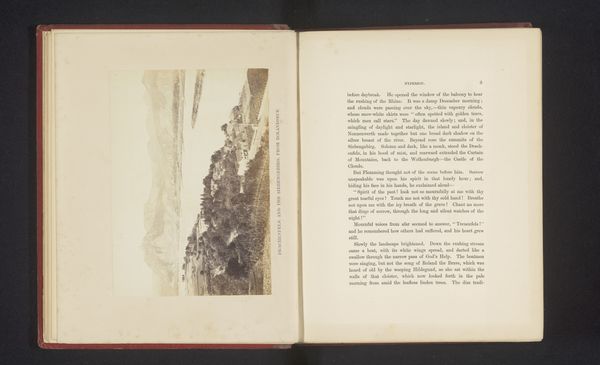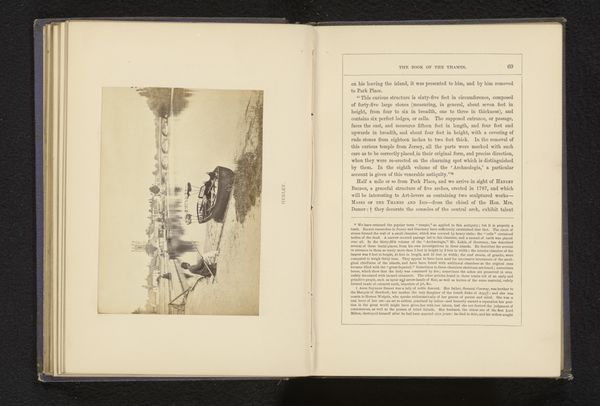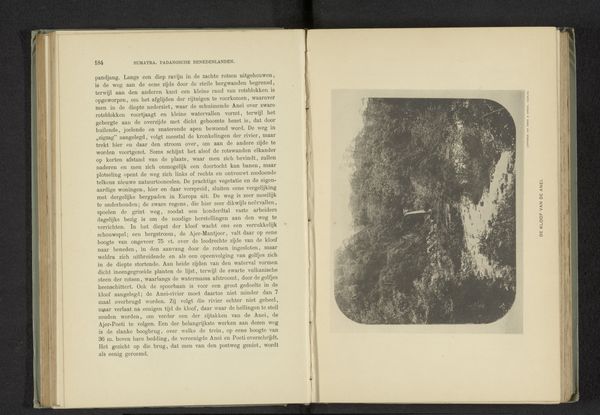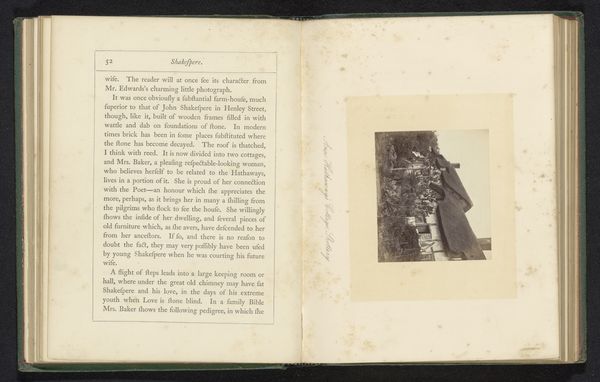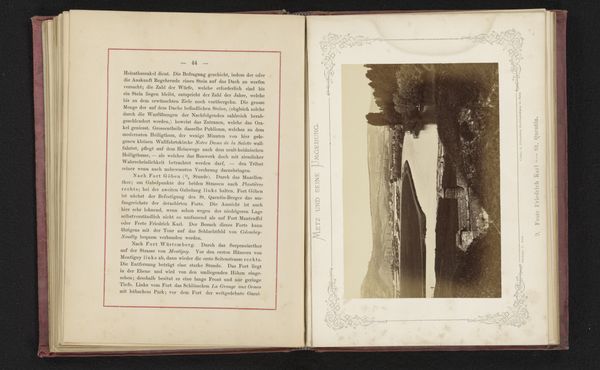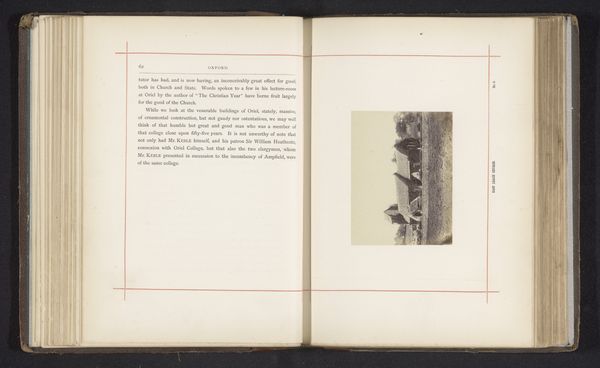
print, photography, gelatin-silver-print, albumen-print
# print
#
landscape
#
photography
#
gelatin-silver-print
#
albumen-print
Dimensions: height 120 mm, width 170 mm
Copyright: Rijks Museum: Open Domain
Editor: So, this is "Gezicht op Meiringen" by Francis Frith, created before 1865. It's a photograph, an albumen print, that's been preserved in an album. I’m really struck by the sharp detail in the architecture against the more atmospheric, almost blurry background. What draws your eye when you look at this image? Curator: It's precisely the contrast in detail that grabs my attention too. We have this incredibly sharp depiction of buildings – consider the labor involved in their construction, the specific types of materials used – positioned against this romantic, almost ethereal landscape. The materiality of the buildings points to very specific resources, trade routes, and economic conditions of the time. Editor: That’s interesting! I hadn't really considered the implications of the built environment versus the natural one. Curator: And think about the photographic process itself. An albumen print like this demanded considerable skill and resources. The photographer isn’t just capturing a view; they are also engaging in a form of production, a craft that has its own set of material demands. Does the labor inherent in producing this photograph change your interpretation of it at all? Editor: Absolutely. Knowing that it’s not just a click of a button makes me appreciate the intentionality behind it. I'm now thinking about the economic structure supporting Frith's practice. Curator: Precisely! Consider the audience, the market for these picturesque views, and the larger industry of tourism and travel that made this kind of landscape photography viable. What story about 19th-century society can we unravel simply by analyzing the production of this image? Editor: Wow, that opens up a whole new perspective for me. It's not just a pretty picture; it’s a product of its time, deeply connected to economics, labor, and even tourism. Curator: Exactly. It’s a beautiful example of how examining the materials and production processes can unlock a deeper understanding of art and its role in society.
Comments
No comments
Be the first to comment and join the conversation on the ultimate creative platform.
